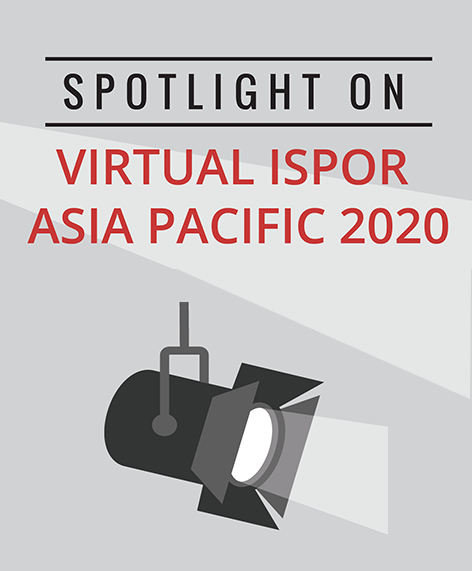Are Standard Methods for Health Economic Evaluation Applicable to Gene Therapies?
Cate Bailey, PhD, MApSci, BA; Monash University, Melbourne, Australia; Ingrid Cox, MD, MSc, Dip; University of Tasmania, Hobart, Australia
Gene replacement therapy is an emerging area in medicine and has been used to treat and prevent several conditions, especially severe genetic disorders. Many approaches have been used, including replacing a mutated gene that causes disease with a healthy copy of the gene, and inactivating or turning off a mutated gene that is functioning improperly and introducing new genes into the body to help fight a disease. [Figure 1]

Figure 1. Session Speakers
Several limitations and challenges have been identified when conducting economic evaluations of gene replacement therapies. This session of the Virtual ISPOR Asia Pacific 2020 conference evaluated gene replacement therapies from this perspective and focused on 4 questions:
- Under which conditions are single-arm studies acceptable and sufficient for decision-making?
- Should generic utility instruments like EQ-5D be used for the valuation of health outcomes in severe pediatric diseases?
- Are analyses over a lifetime horizon feasible and appropriate despite substantial uncertainty around the long-term efficacy and safety?
- Are the difficulties of economic evaluations for gene replacement therapies alleviated with the use of new payment models?
Single-Arm Studies
Recruitment of patients for trials in the area of gene replacement therapy must be done in very small patient populations, making it impossible to run randomized controlled trials. Single-armed trials are thus used extensively for decision making in this area. Despite this, session moderator Mondher Toumi, MD, MSc, PhD, Public Health Unit, Aix-Marseille University, Marseille, France, stated that there is a dramatic treatment effect size compared to the historical cohort, with the primary endpoint being “objective, durable, and reproducible.” Confounding factors are well understood and statistical methods are sound. Omar Dabbous, MD, MPH, AveXis, Inc, Bannockburn, IL, USA, stated his passion for single-arm studies in this context. [Figure 2]
Figure 2. Depends how we cut the cake.
Child Utilities
There are significant challenges with measuring quality of life (QoL) in children, particularly in those under 5 years of age and where children are pre-verbal. This challenge has meant that it is hard to produce properly validated tools for measuring pediatric QoL. In some cases, caregivers may act as proxies, but this also has limitations, as it may not reflect the child’s actual QoL. Dr Toumi suggests that person trade-off or willingness-to-pay may be more appropriate, given the large life-year gain. It is also important to collect QoL information from carers, as the carer’s QoL may decrease in line with the patient’s, particularly where patients are children or the elderly. Ataru Igarashi, PhD, Unit of Public Health and Preventive Medicine, Yokohama City University, Yokohama, Japan, cited his study on the impact on QoL and the economic burden on family caregiving in dementia patients in this context.
Time Horizons
Dr Toumi articulated that “time horizons is one of the most challenging situations” when looking at economic evaluations of gene replacement therapy. All 3 panelists agreed that there is not sufficient time during trials to capture the whole impact of the products and this creates uncertainty beyond trial periods. However, they agreed that there must be a trade-off between uncertainty and the appropriate result. Dr Igarashi introduced a “invest first, return next” model that focuses on the initial short-term benefits and possible savings on healthcare costs in the long-term. Other proposed solutions included the use of scenario analyses and elicitation of expert panels perspectives on efficacy sustainability beyond the specified time horizon.
“Time horizons is one of the most challenging situations” when looking at economic evaluations of gene replacement therapy."
—Mondher Toumi, MD, MSc, PhD
New Payment Models
Dr Toumi stated that “innovative payment models represented a tool for mitigating risk of long-term loss of efficacy or adverse reaction” in this specific situation. In the context of the Japanese health system, Dr Igarashi noted that health technology assessment is used for price change rather than coverage decisions as all drugs are covered by the government with universal health coverage. Notwithstanding this, perspectives of the population are slowly changing to suggest resource allocation and restriction on certain therapies to control increasing health expenditure in Japan. These changes will have an impact on health technology assessment and the complexities that currently exist with the reimbursement system.
Affordability of Gene Replacement Therapy
How best can we work with affordability so that we can get patients access to these therapies? The panelists agreed that decision makers need to be aware of the challenges on the horizon for health technology assessment in this area. In anticipation, NICE conducted a mock health technology assessment to better understand this area and concluded that there was too much uncertainty to determine cost-effectiveness. However, decisions will have to be made and preparation for this decision making is required. Panelists exhorted payers to do their homework! Early preparation in this area is vital.
Explore Related HEOR by Topic


